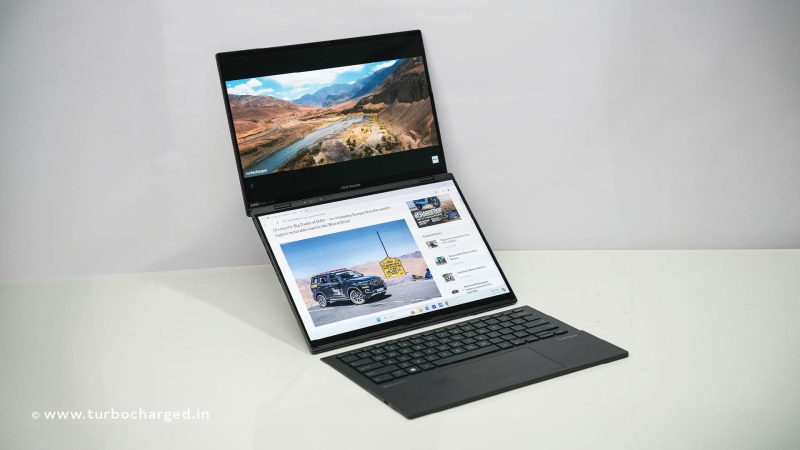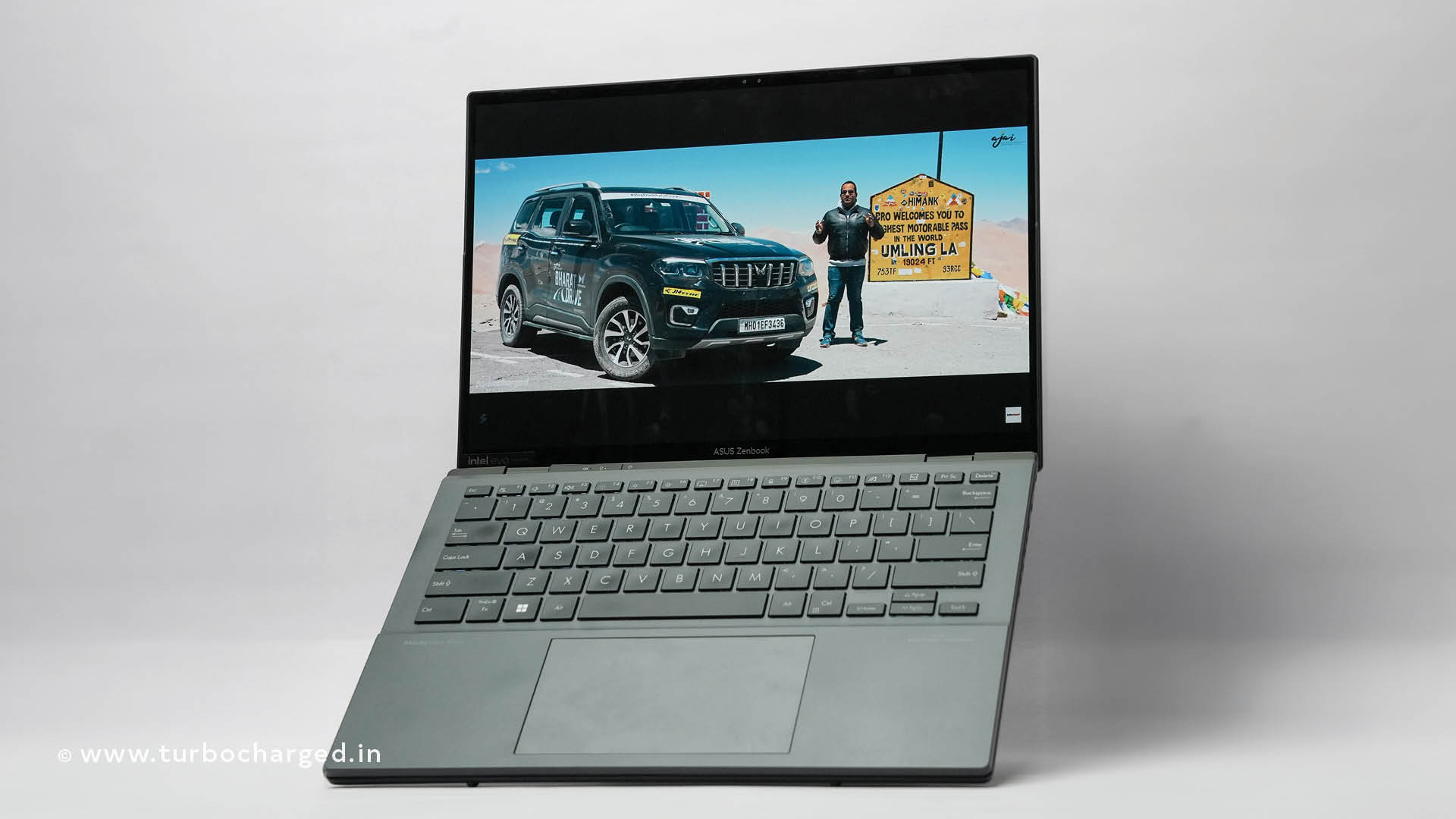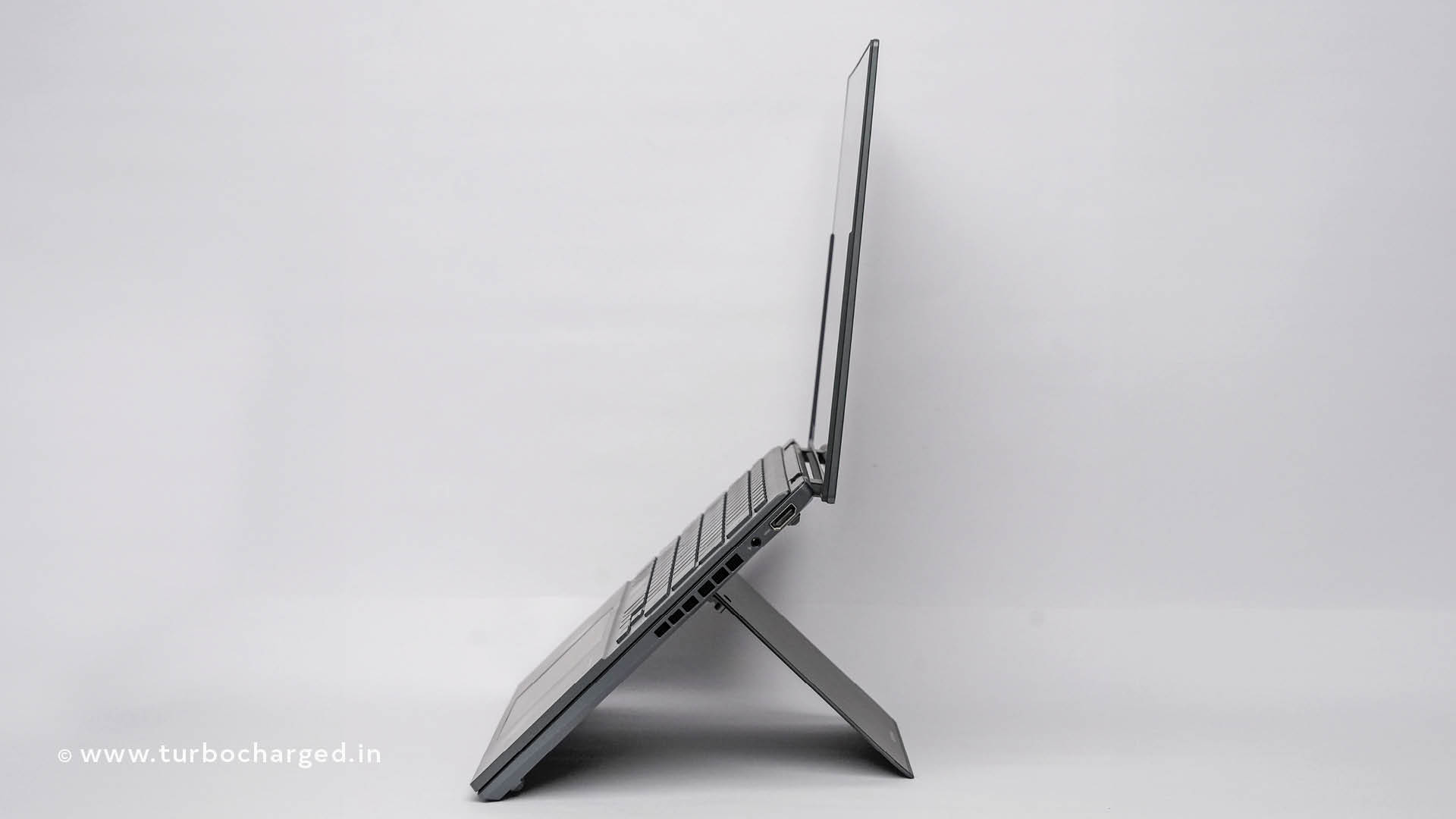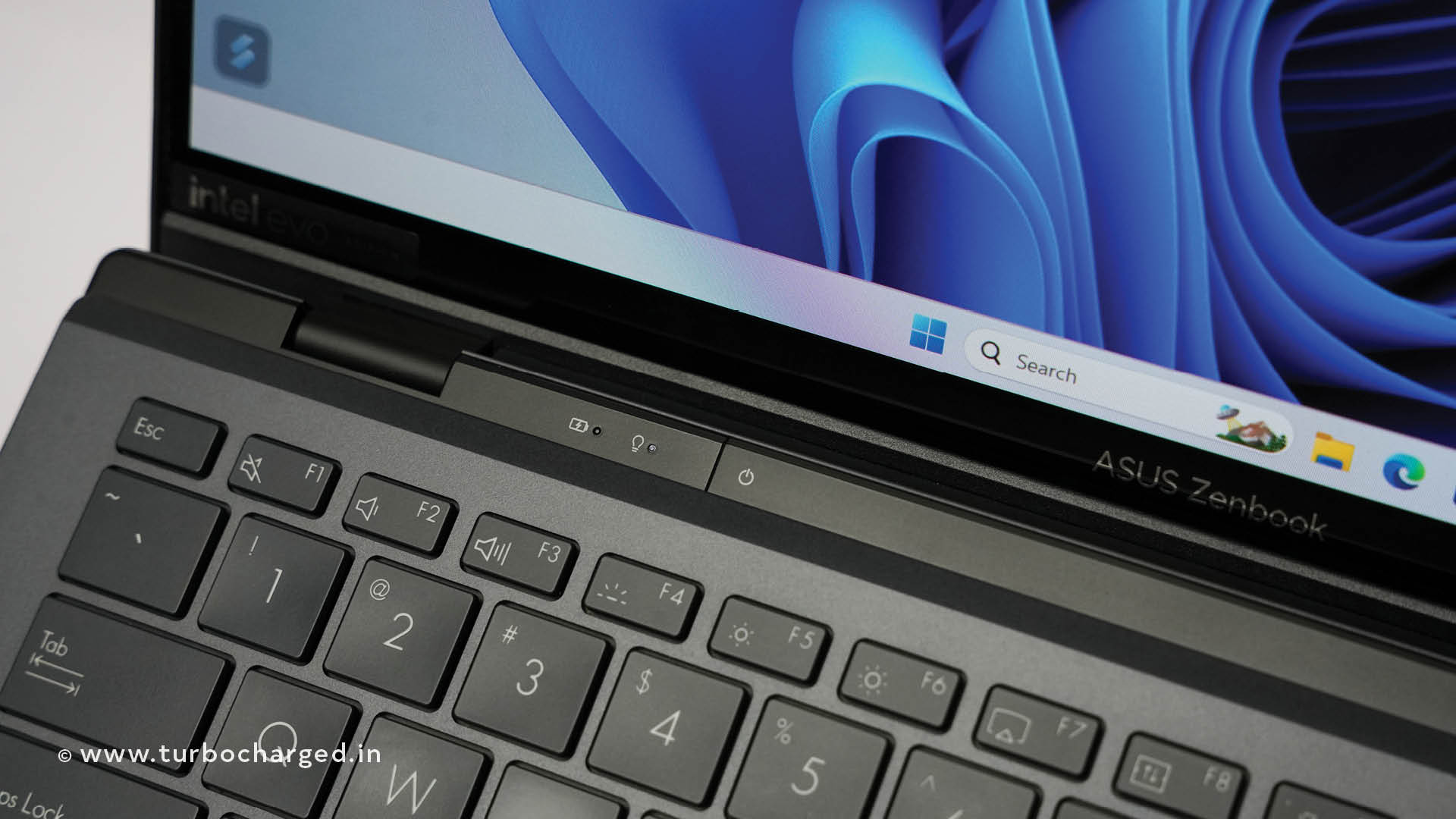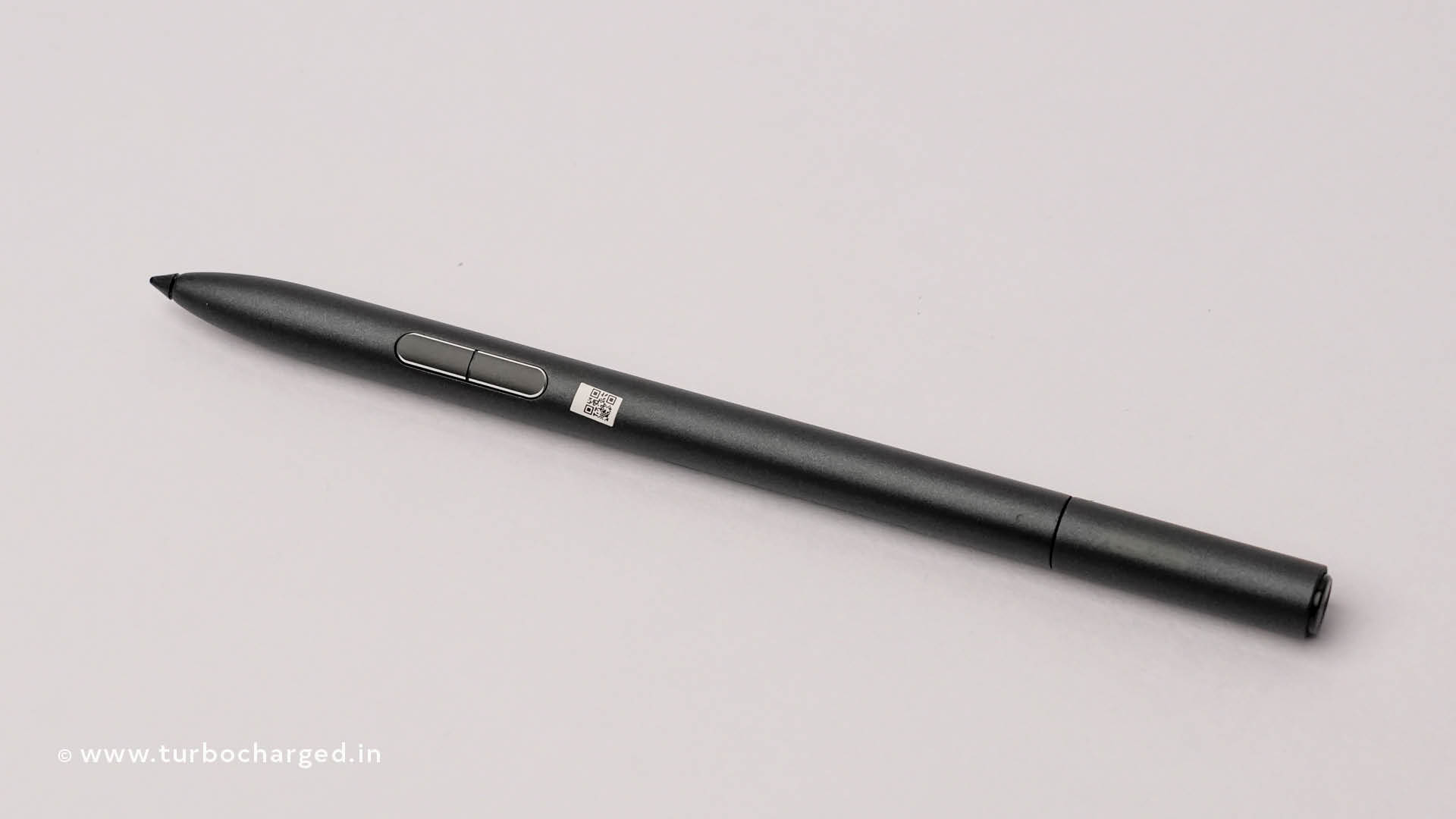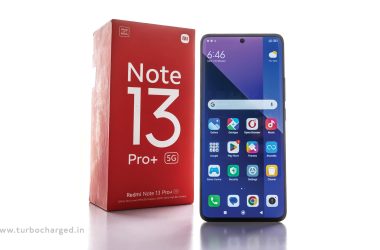Ipads and tablets are handier to hammer out those reviews we write every other day. But when it comes to doing more than just typing out a 1,000-word article, I prefer a laptop. Like, for instance, working on a spreadsheet or editing a video. That’s when you realize – bigger is better. And the Asus Zenbook Duo is a dream come true for these tasks, and a lot more! It isn’t just a conventional laptop after all – it has two screens, both bright, OLED touchscreens.
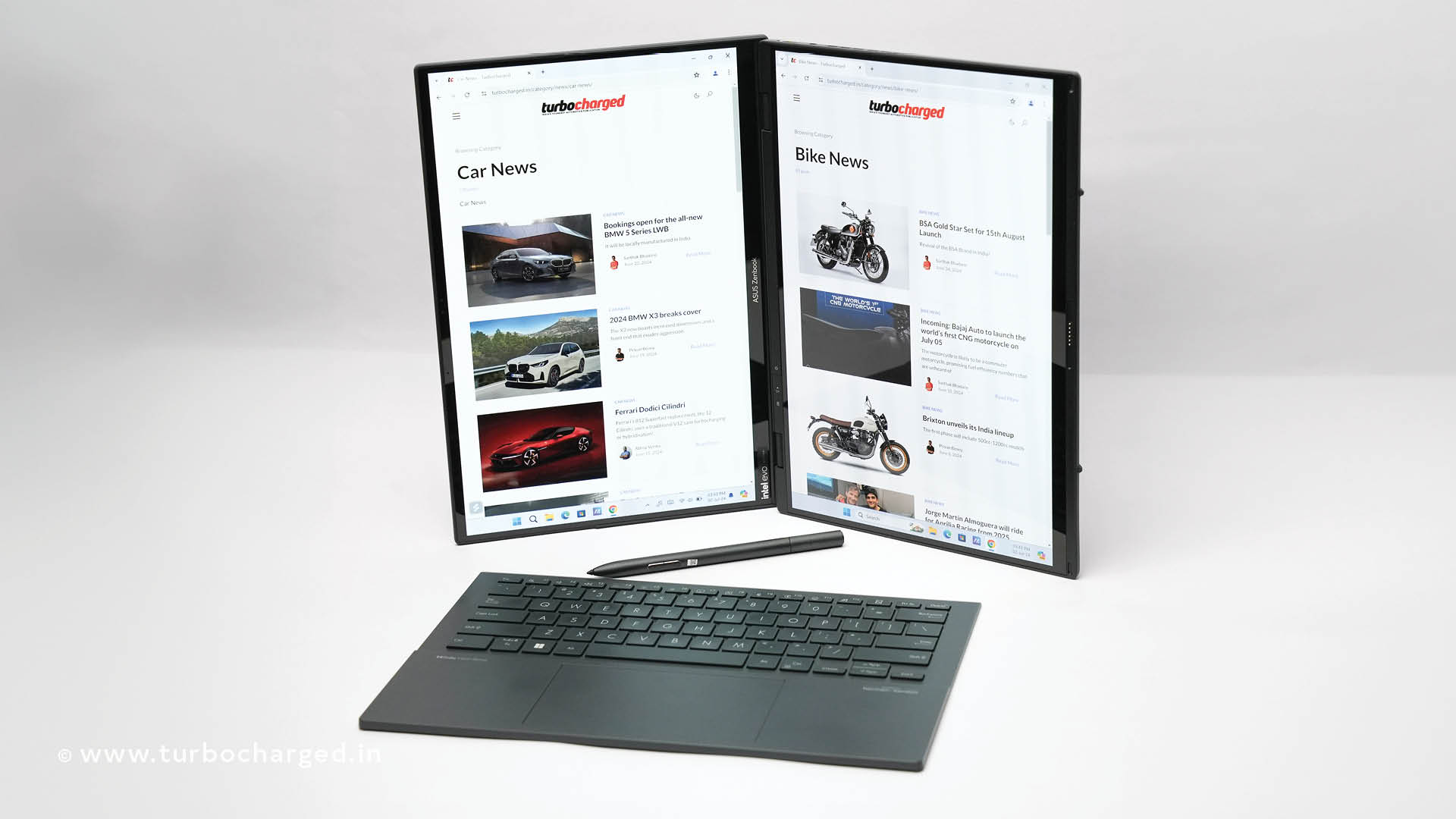
The design is sleek and minimalistic, typical of Asus, and the laptop also feels well-built courtesy of the aluminium chassis. It looks like a conventional laptop when closed, but open it up, detach the keyboard that’s attached via magnetic pins, prop up the laptop on the built-in stand on the base, and you’ll realize the Zenbook Duo is unlike anything else. The keyboard is backlit, boasts Bluetooth connectivity, and features a proper touchpad.
Given all the hardware it packs in, the Zenbook weighs about 1.65kg, but look past the weight and you’ve got a powerhouse of a device. It is offered with Intel’s Ultra 7 and Ultra 9 processors, and we got the latter, which makes sure the laptop is lightning quick. You also have 32GB RAM available, which adds to the Zenbook’s enviable performance. To put it to a thorough test, we loaded up the Zenbook with serious tasks including Counter Strike 2 and editing videos on Premiere Pro, and it passed these tests with flying colors.
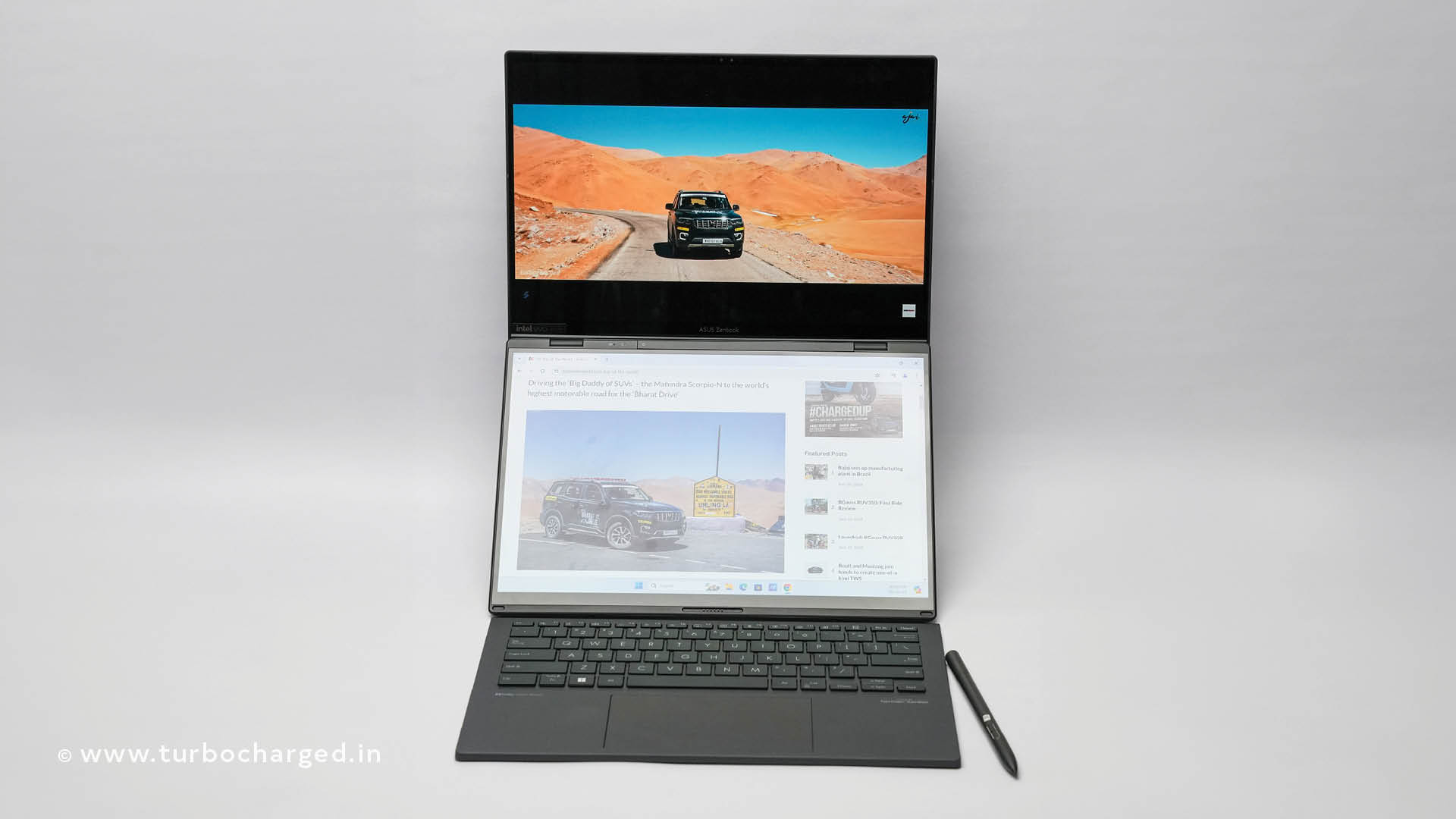
Dual screen mode also helps avoid the need to scroll constantly by letting you see more at one go. Colors look vibrant, screen resolution is a crisp 2,880 x 1,800, and refresh rate is 60Hz. The Zenbook also comes with its own ‘pen’ which is the Asus Pen 2.0 active stylus and a brilliant accessory given the amount of real estate you use with the two screens. The pen can be charged via a USB Type-C port on it, but there is no way to attach it to the laptop, meaning you have to be mindful of where you keep it.
The keyboard charges via its magnetic pins or the USB C port on it, just like the laptop itself. The charging brick is surprisingly compact too. Asus claims the Zenbook Duo will last 10 hours, but we found it to be running out of juice in 7-8 hours given the amount of power consumed by the two displays. Heavier work such as video editing reduces this further to about 4-5 hours only, though this is still pretty decent. Overall, this is a brilliant laptop to have given the portability it offers despite the luxury of two proper, high-resolution displays.
Prices start from ₹1.60 lakhs, while the higher-specced version you see here costs ₹2.40 lakhs, making the Zenbook Duo an expensive proposition. It sounds a little gimmicky but is practical and a breeze to work on.





